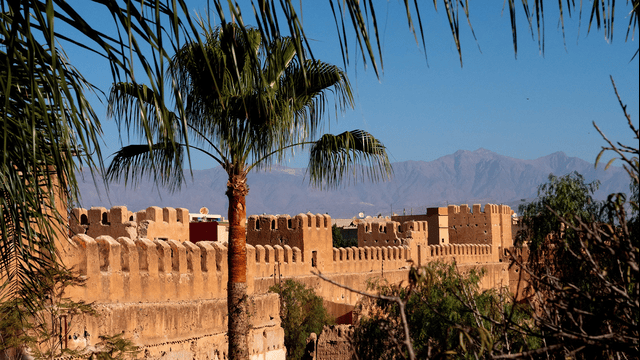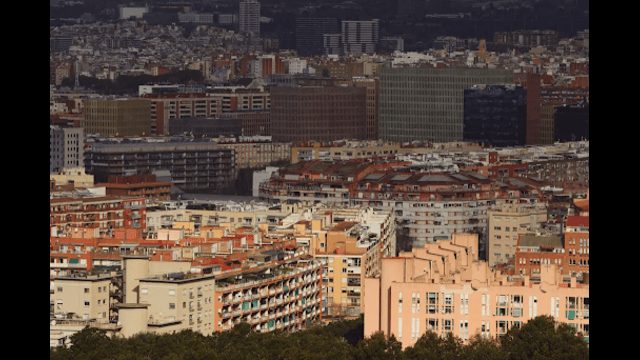
Taroudant is often called “Little Marrakech” for its honey-colored sandstone walls and bustling souks.
As the first call to prayer echoes over Taroudant at dawn, life slowly stirs in this hidden Moroccan gem. Locals on foot, bicycle, or horse-drawn carts move through the narrow streets of the old medina. Schoolchildren dart past merchants arranging spices, fruits, and handwoven carpets. The warm aroma of fresh khobz lingers in the cool morning air.
Just a 90-minute drive from Agadir, Taroudant is often dubbed “Little Marrakech.” But this town is more than a nickname. It’s a soulful, less-trodden destination that lets visitors soak up authentic Moroccan life—without the chaos of larger cities.
A Living Tapestry of Culture and Calm
Unlike Marrakech, where tourists often overwhelm the ancient quarters, Taroudant is refreshingly peaceful. Its sandstone walls frame a medina alive with tradition. Set against the dramatic Anti-Atlas Mountains, the town has been named a national cultural heritage monument.
Here, travelers can dine on Amazigh (Berber) cuisine, sip tea in family-run cafés, or unwind in a traditional hammam. Its calm rhythm offers a welcome contrast to Morocco’s busier hubs.
A Tourism Boom—and a Balancing Act
Morocco saw a record-breaking 17.4 million tourists in 2024, surpassing Egypt as Africa’s top travel destination. That’s a 20% jump from 2023, and 33% above pre-pandemic numbers.
The tourism rise continues into 2025, spurred by luxury hotel openings and new flight routes. Events like the upcoming African Cup of Nations also draw global attention.
Yet the boom brings challenges. Overcrowding threatens iconic spots like Marrakech, now ranked among the world’s most tourist-packed cities. Experts warn that overtourism risks eroding cultural authenticity and community life.
A Timeless Hub with Modern Appeal
Taroudant, with a population of 80,000 and a youthful energy, offers a compelling counterpoint. It boasts two vibrant souks. Souk Berbère serves up daily goods and fresh food, while Souk Arab dazzles with handmade jewelry, ceramics, and leather crafts.
The town's rich past dates back to Roman times, with a golden era during the Saadian dynasty. Today, it remains a key trading center—and a haven for culture lovers.
Riad Retreats and Slow Living
Hidden behind simple facades, Taroudant’s riads (traditional homes) surprise visitors with their lush interiors. One standout is La Maison Taroudant, a boutique guesthouse co-owned by French designer Margaux Pigalle.
She left New York in 2019 and found peace here. Her riad, filled with fig, citrus, and rosemary trees, offers a sensory escape in the heart of the medina. “It’s like a Berber farmhouse with a touch of Provence,” she says.
Art, Argan, and Ancient Landscapes
Just five miles away lies the Palais Musée Claudio Bravo—a stunning museum and hotel that once belonged to the famous Chilean painter. The palace blends Moroccan and European styles and houses art, antiques, and even dinosaur fossils.
For nature lovers, the oasis of Tioute is a must-see. Its ancient kasbah overlooks palm gardens irrigated by traditional khettaras—underground channels that guide water through gravity. At the Taitmatine Women’s Cooperative, visitors watch Amazigh women handcraft argan oil, used both in cooking and high-end beauty products.
Hidden Mountains and Coastal Escapes
To the south, the Anti-Atlas Mountains unveil a wilder side of Morocco. Villages like Tafraoute showcase pink mud-brick homes and timeless Berber customs. Iconic rock formations, like Napoleon’s Hat, dot the rugged landscape.
This region is a paradise for trekkers, climbers, and mountain bikers. Meanwhile, the Atlantic coast lies just west. Agadir is a bustling port city, but nearby Taghazout and Tamraght attract surfers and digital nomads seeking chill beach vibes.
A Blueprint for Sustainable Travel
As Morocco’s tourism footprint grows, towns like Taroudant highlight a different path—one that values heritage over hype. With most travelers flocking to just a handful of destinations, experts suggest spreading out the flow.
Taroudant stands as a model for mindful travel. It offers history, hospitality, and heart—without the crowd.















